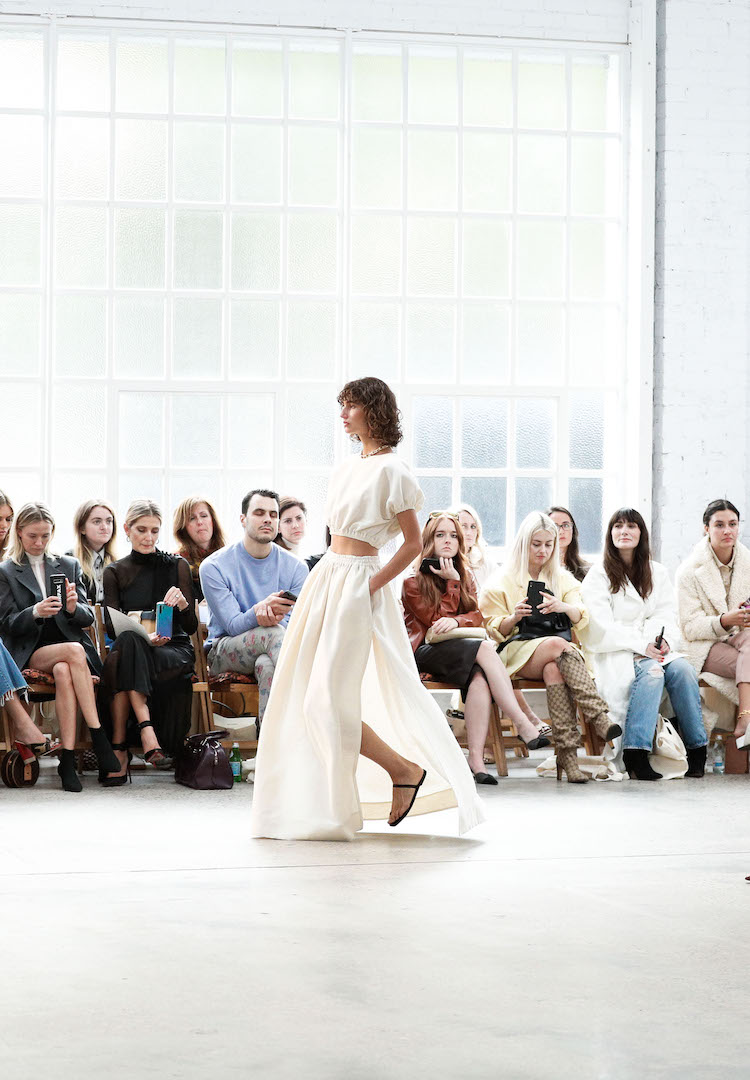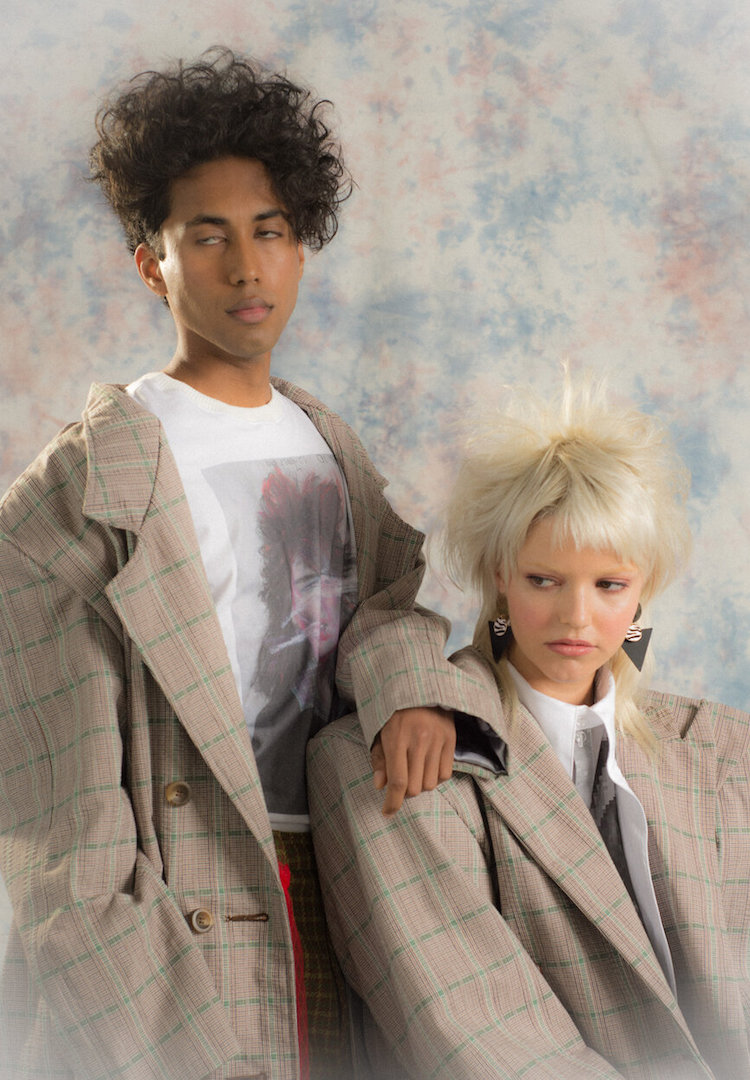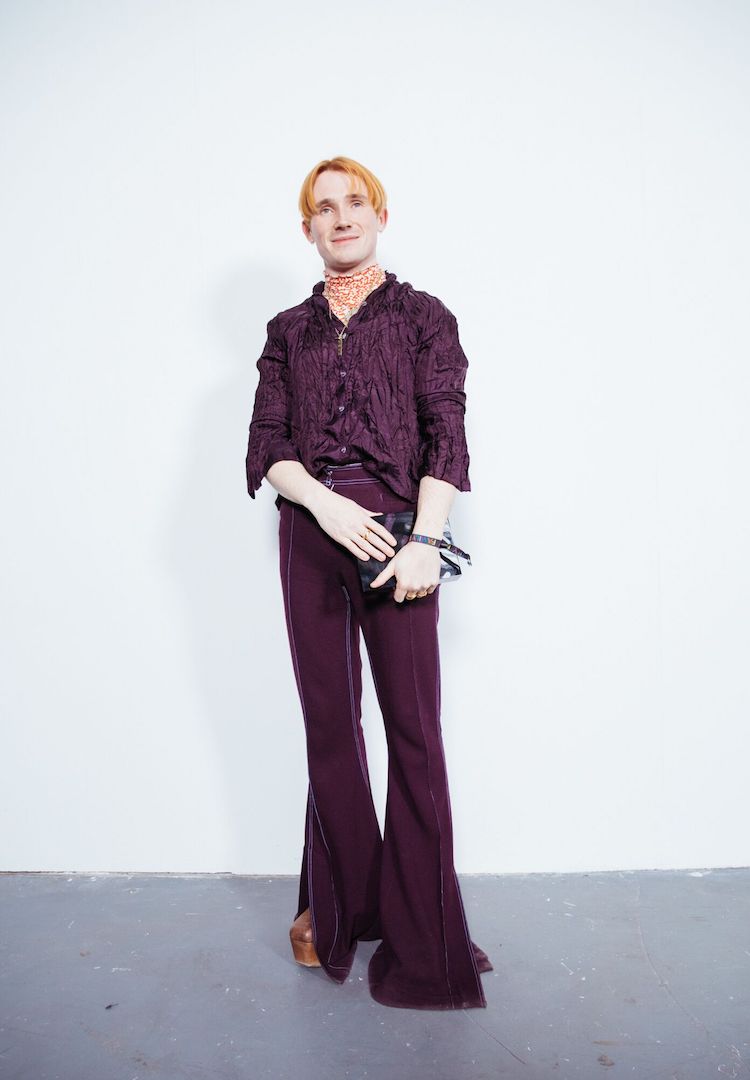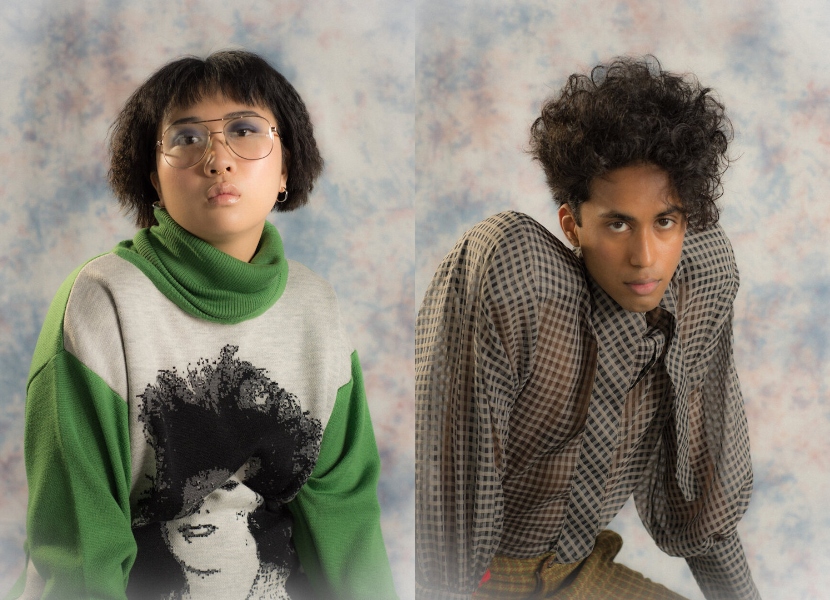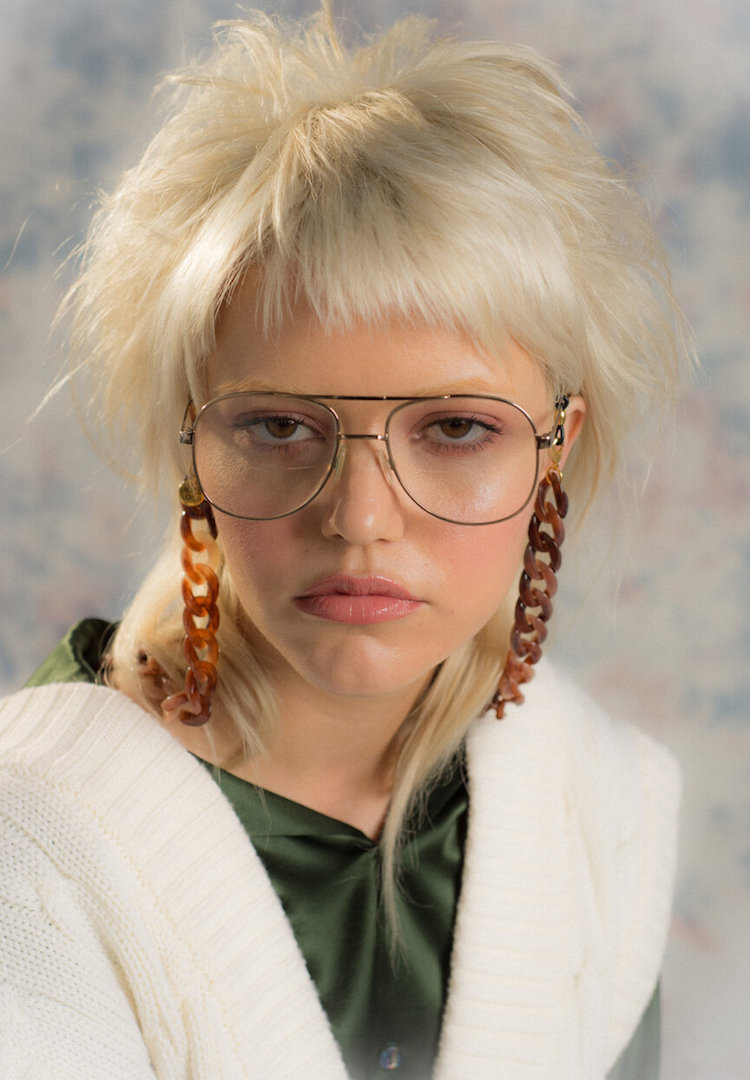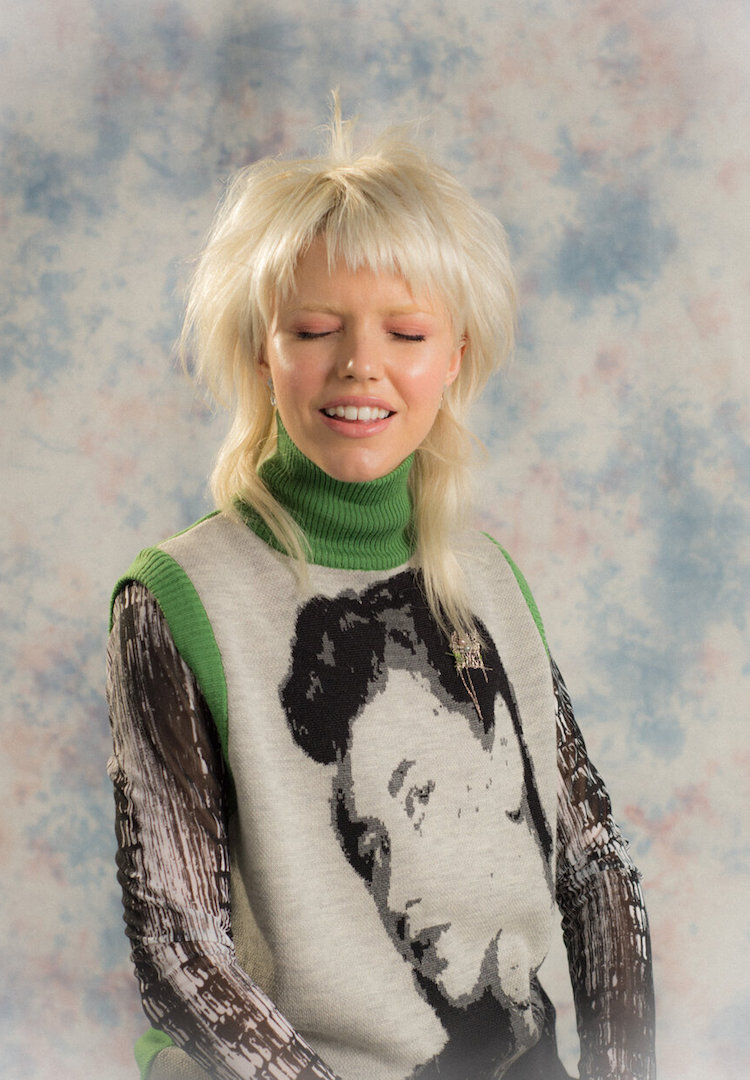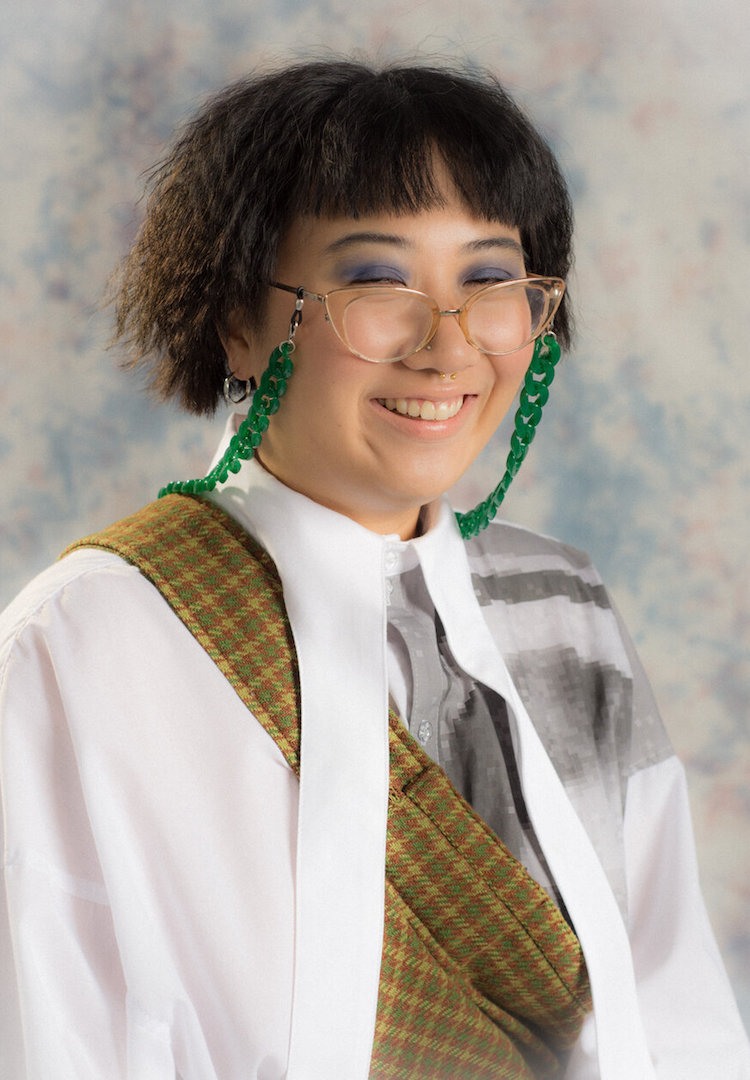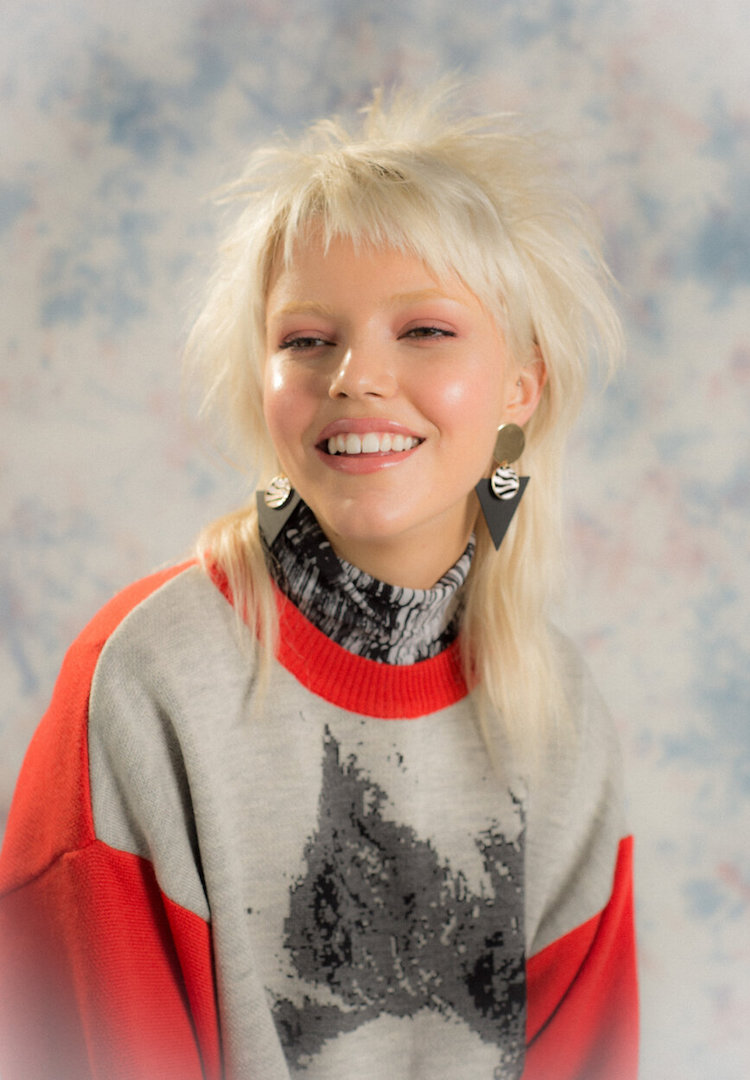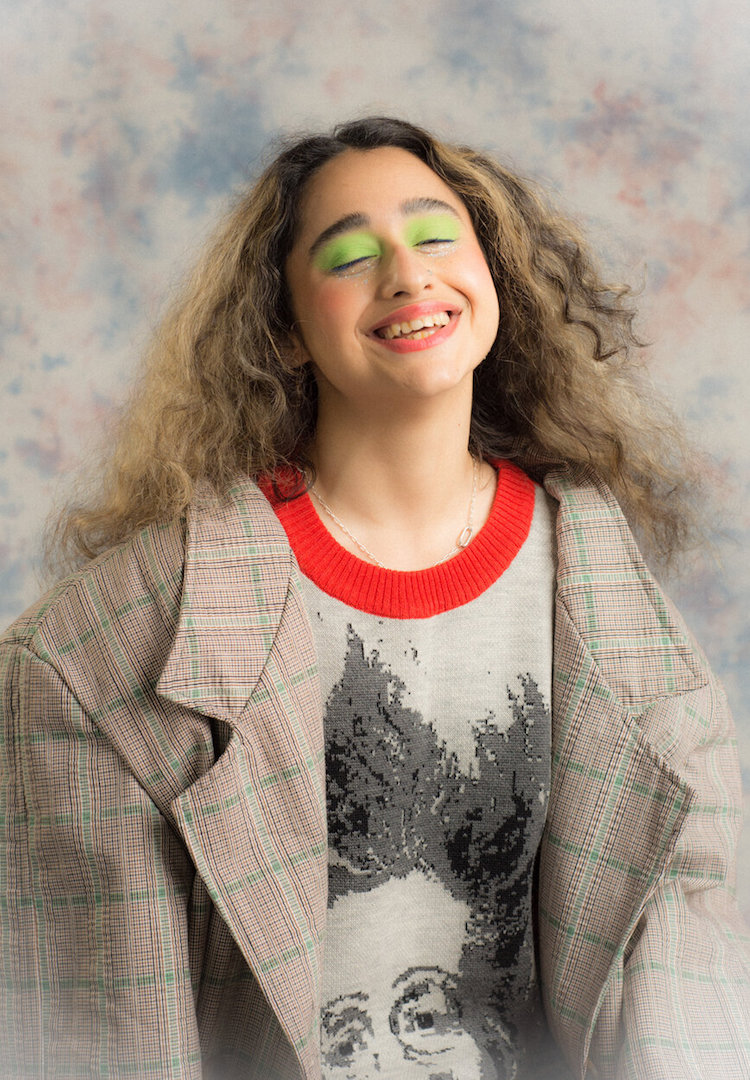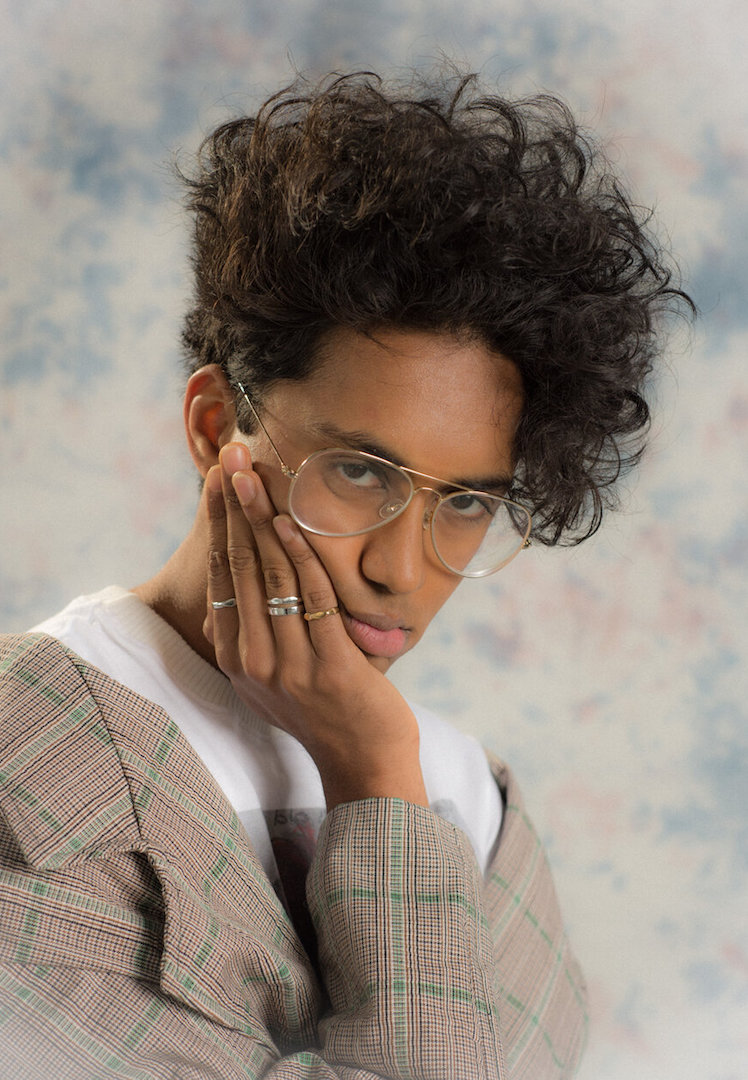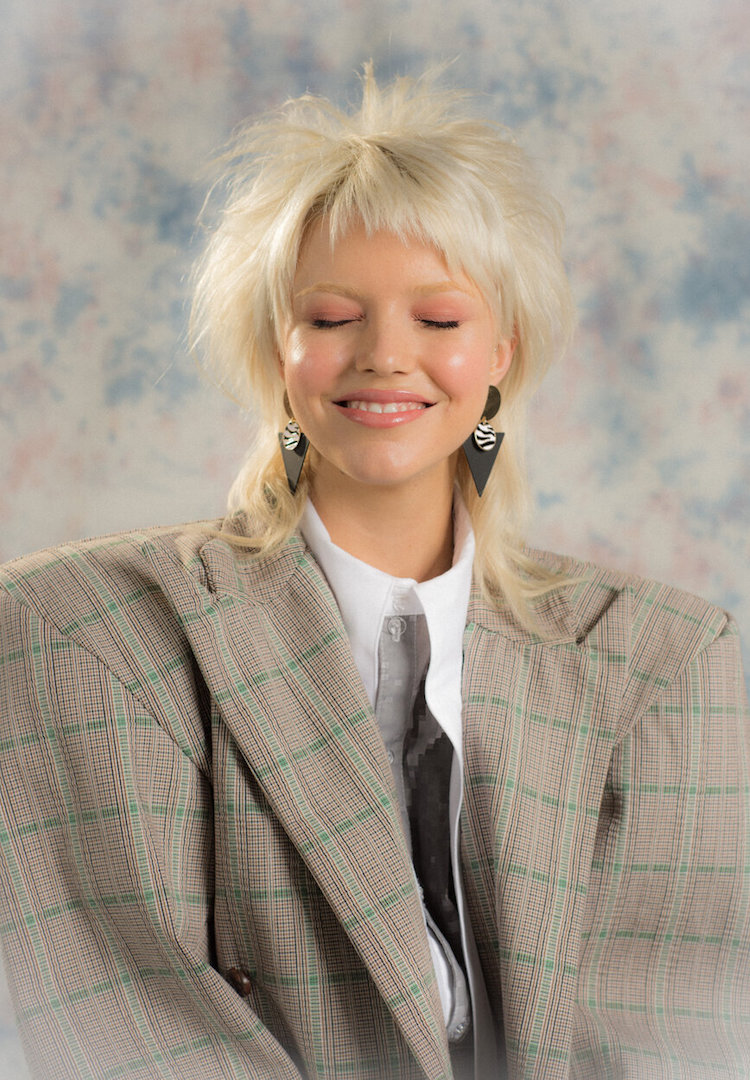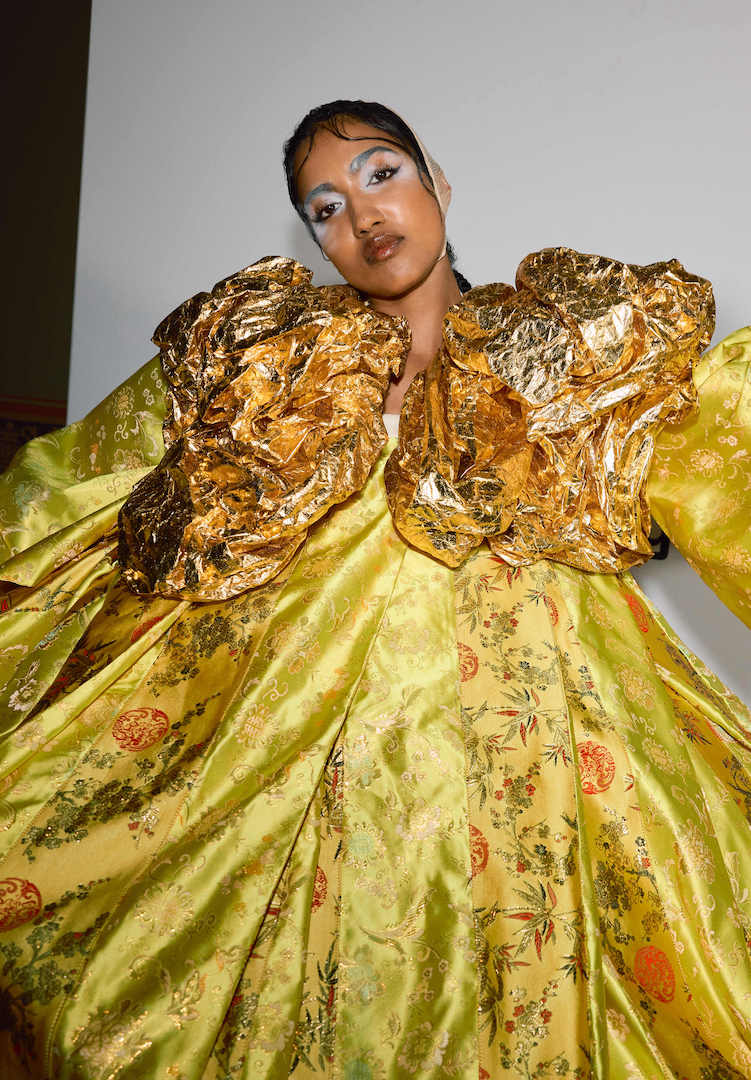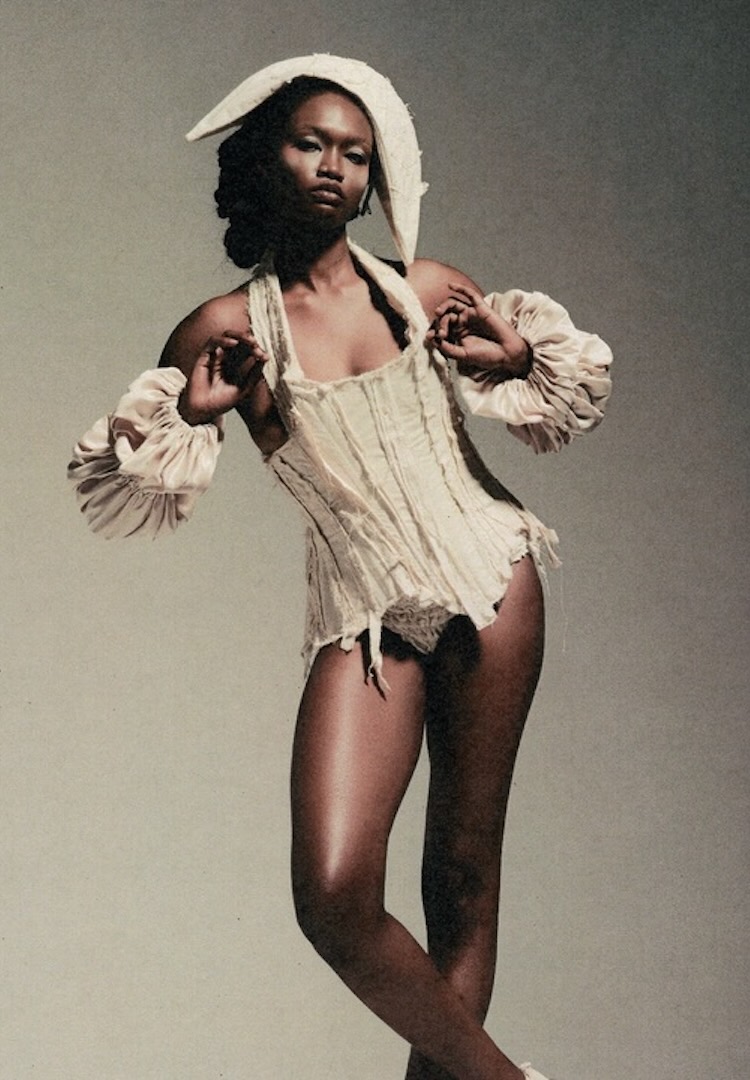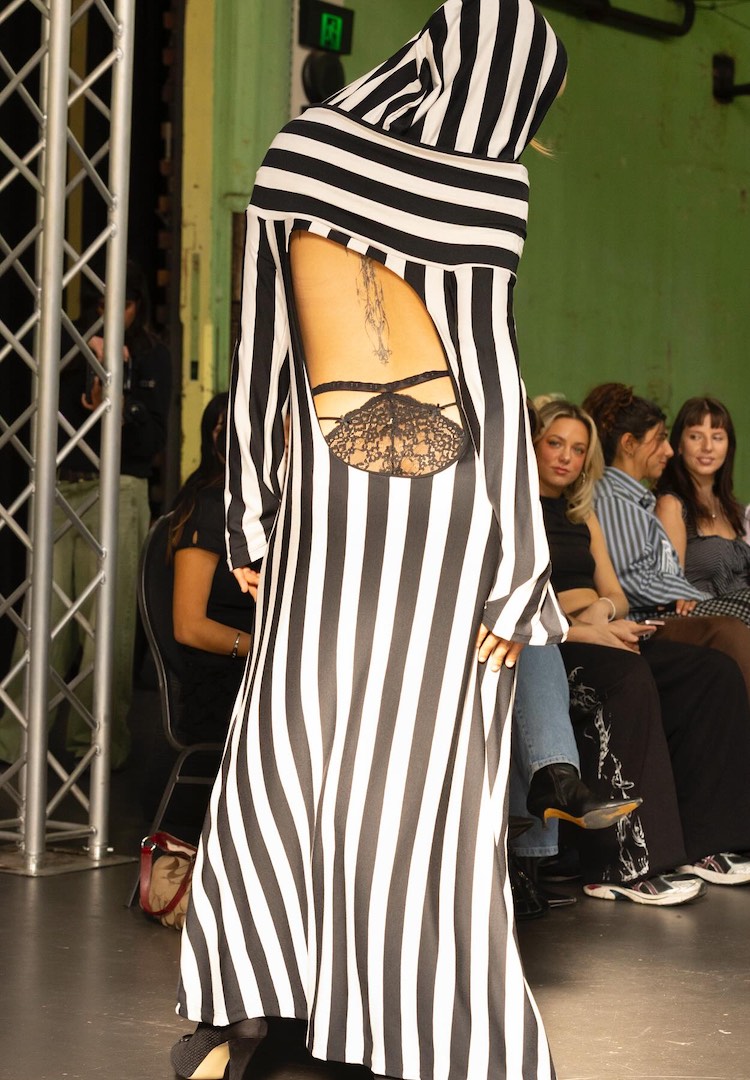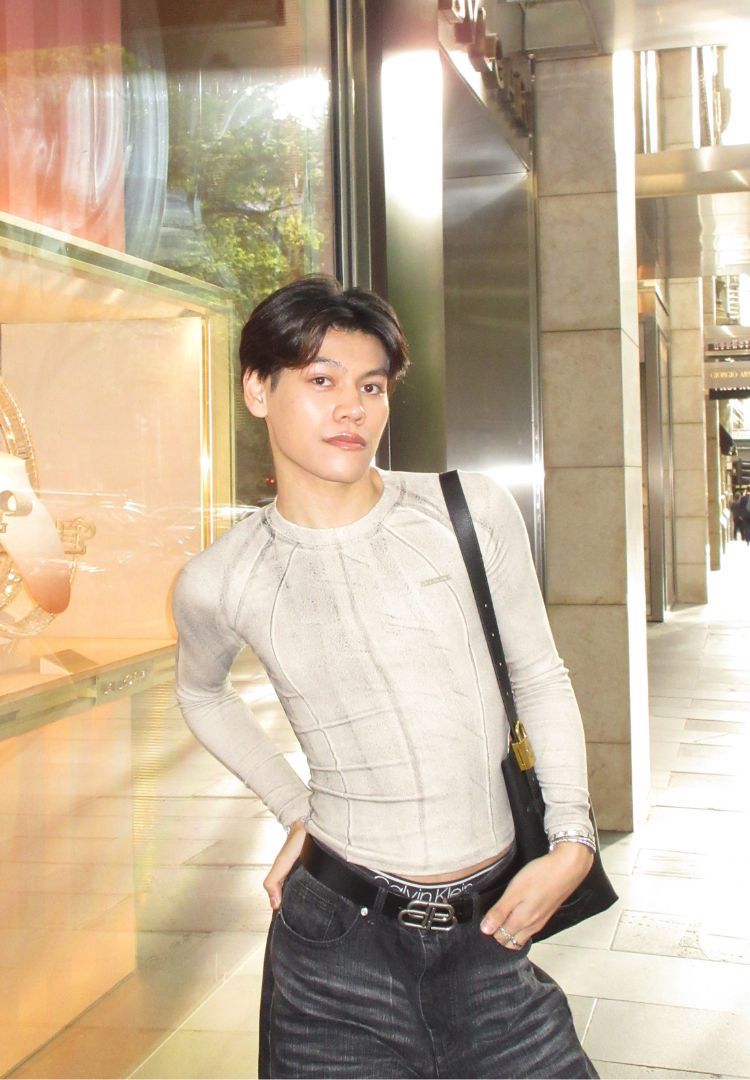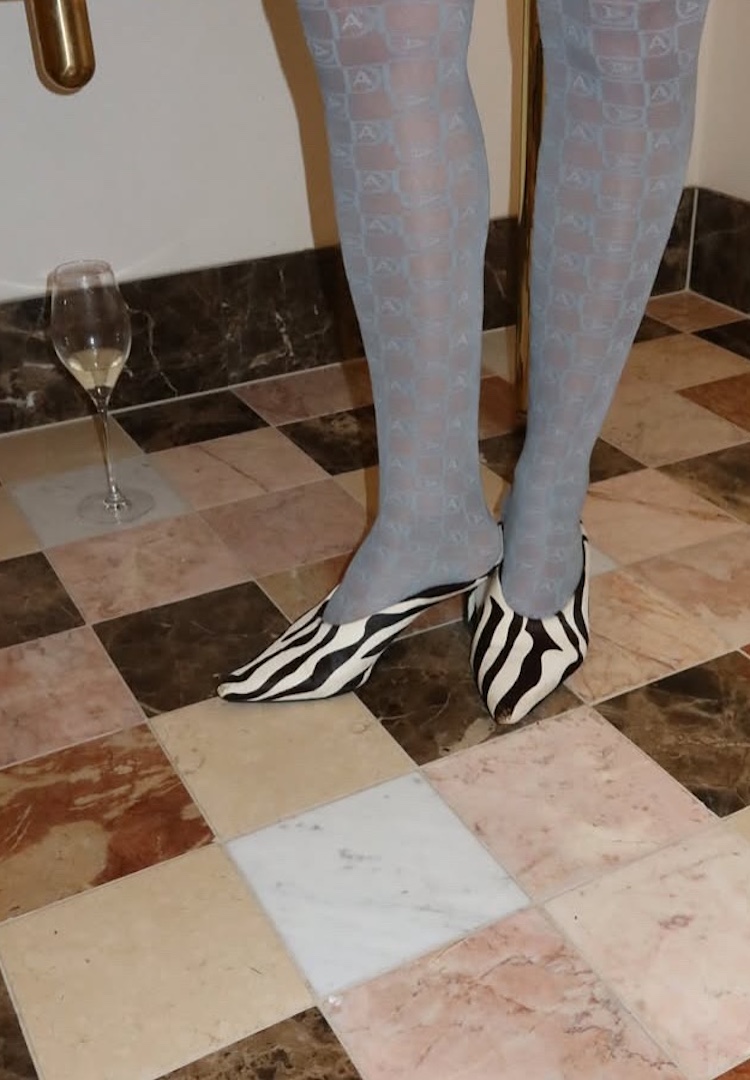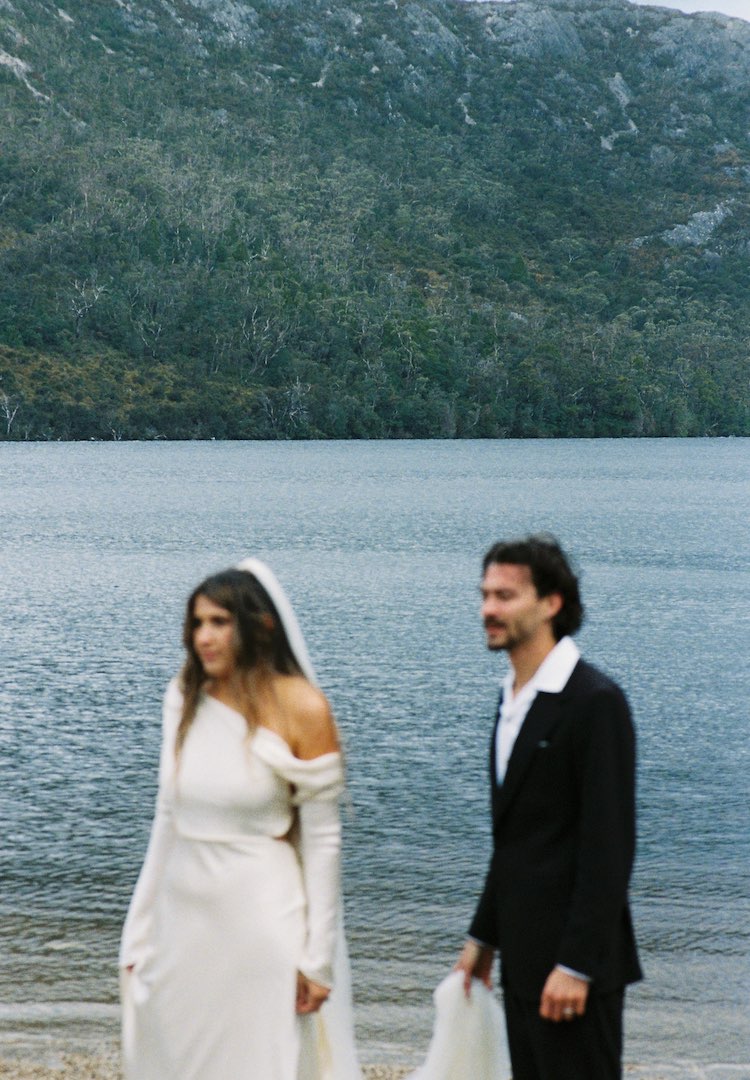Designer Jordyn Smith’s Frankenstein-esque graduate collection features retro found photographs
Photography by Rebecca-Marian Irene
Class of 1989.
Once again, Fashion Journal is the supporting partner of Virgin Australia Melbourne Fashion Festival’s National Graduate Showcase.
The 12 finalists for 2020 have been announced, and they’ve given us an insight into the process behind the collections they’ll be showing.
Next up: Jordyn Smith and her graduate collection Fashion’s Prometheus.
Please introduce yourself to our readers.
Hi, I’m Jordyn! I’m an Aquarius, sunsets aren’t really my thing – I do enjoy long walks on the beach, but with a true-crime podcast in my ears – I’m a recent graduate from RMIT, I enjoy cats, and I’d really love to see Harry Styles and Orville Peck wear my work.
Tell us about your collection.
Fashion’s Prometheus is based on the assemblage of found objects and imagery. Beginning with ephemera or lost and forgotten photographs I purchased around Ballarat, I chose to explore the images’ narratives in order to embed them into the garments. This purposeful collecting and curation is used as a way to creatively engage with and repurpose once-forgotten memories and items. I’m very fortunate to have been able to collaborate with different manufacturers and suppliers within my hometown of Ballarat. Working with local creatives adds further narrative to these garments, bringing value and longevity to the ownership of such an item.
When did you know you wanted to get into fashion design?
I grew up around industrial sewing machines and local manufacturing. My grandma had her own business long before I was born, and I spent a large portion of my time with her as a child. I always enjoyed making things and using the machines once I was allowed to. I originally studied Psychology for a semester back in 2012, but quickly realised that I needed to be working with my hands. One gap year of full-time work and overseas travel later, I finally realised that my younger self was right in thinking the fashion industry was where I would like to work. Cue an associate degree, a bachelor’s degree and now honours, and here I am.
How would you describe your design style?
I usually answer this with ‘a mess’. But, to be honest, I’d like to describe it as considered punk? Reconsidered vintage? Let’s let the people decide! I do refer to my assemblage method fondly as “Frankenstein-ing”, though.
What were the major points of inspiration for your graduate collection?
I’ve always worked with either a narrative or a physical idea to bring about my design concepts because it helps to have something tangible to work back to when I’m feeling stuck. For Fashion’s Prometheus, I’d brought this school photo of my mum in year 10 to uni as part of a prior assessment. I think a part of me knew from then that photographs and found photography would be a big influence on my collection. I began collecting these photographs and wanted to give their narratives another life. Found garments also majorly contribute to the silhouette development, as I combine them together to create something new.
How did you go about sourcing the found objects incorporated into this collection?
I spend a lot of my spare time searching through op shops, antique and vintage stores, eBay and Etsy. I have a real affinity for items that have had a long life before I find them, and just really enjoy the craftsmanship and materiality of vintage and antique goods. I sourced early photos from my favourite local antique store in Ballarat, and found wedding photos and what appears to be a 50th wedding anniversary celebration for the same couple. I couldn’t bear to leave them there, which began my hunt for ‘lost’ photographs I could use in my collection. Garments I used in my initial designs and the ‘Frankenstein-ing’ process was located in a similar way, at op shops and on eBay. The photo of my mum used on the green jumper, however, I stole from her pile of old photos and made sure it made its way into the collection too.
Why was it important to you that you collaborate with local businesses in Ballarat?
Being in a unique position where I commute from Ballarat to Melbourne so often, it made a lot of sense to try and localise my practice and create a local creative network. Over the years we’ve unfortunately lost a lot of the textile industry’s skillsets as factories could no longer sustain themselves. So, I think it’s vitally important to hold on to the ones that remain. The support that Interknit, Greenhalgh’s tannery, GM Jewellery, Ellen Eustice (a photographer), Mitzi Radford (a model) and the likes have provided me is something that I want to make sure I channel straight back into my own community. Having support and encouragement from a team is much more exciting than working by myself.
Tell us about the experience of putting together your graduate collection.
I learnt a lot about myself and learnt how to just let things be. I was quite the stress-head throughout the first three years of my degree, but in my honours year I decided to just let the process happen naturally, and not to sweat the small stuff. Obviously I wanted to make this collection one of my best, as this is what I was graduating with, but I also made sure to let go of the pressure I put upon myself – working with what I have and those who’ve supported me the most.
What part does sustainability play in your design practice?
I’m really trying to make sure that sustainability isn’t just an afterthought, that it just is the way I practice. I only use vintage, deadstock, thrifted or end of roll fabrications to produce my work, and where I can’t, I’ll use a sustainable alternative or fibres that can be regenerated after their use. Sustainability for me also includes using local production and sourcing as a means of lessening the miles travelled for a product. There are always things to improve on and engage with more, and I hope to continually build upon my methods as I work.
What’s next for you?
I can fully assure you that I’m making this all up as I go. I have no idea! Well, half an idea. I have goals, and things I’d love to do, but I’m still in the process of turning those dreams into reality. Currently, the plan is enjoying some downtime after six years of study, while still saving and applying to work overseas. I’m hoping to create a network of similar-minded practitioners who want to help connect people like the creators I’ve worked with at an international scale, and really help the Australian fashion industry grow, evolve and connect.
Find more of Jordyn’s work here.
@jordmsmith

